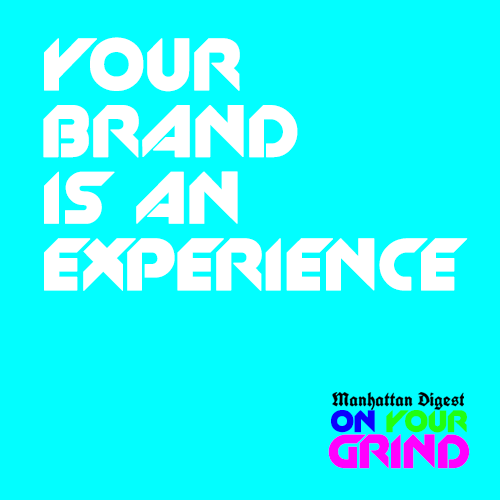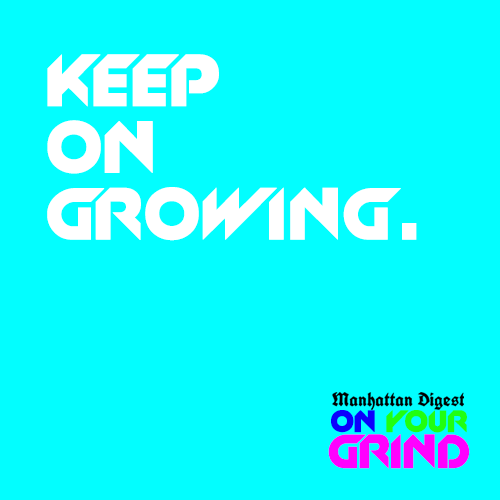When you talk about success, going for goals and being “on your grind” in today’s always-on, hashtag-saturated world, it’s not long before discussions of personal branding come up.
What is “personal branding?” It’s thinking of yourself, your projects, and the things you do as a big brand (like Apple or Coca-Cola) would and then using that framework to market yourself and build your business. It means: developing and deciding on the identity (and image) that you put forth into the world, through the channels in which you communicate.
Proponents of the practice are very clear about the benefits of personal branding: Reach more people! Make more money! Accelerate your career!
Who wouldn’t want that, right? And it makes sense: there are 4.5 billion (with a B) pieces of content being created online each day, so if you want to stand out, you have to find something that sets you apart. Since no one does “you” better than yourself, why not do it with more dedication than ever and just a little sprinkling of strategic thinking, based on how big brands do it.
Here are 3 things to think about to get you started:

Brands aren’t things, they’re experiences.
When you think about your personal brand, don’t immediately think about logos and websites and business cards – the tangible stuff that brands have and savvy marketing people dole out like candy. Don’t think about what it looks like yet. Think of what it is. Think of your personal brand as something that people experience.
Let’s look at Apple. Great products, cool design, helpful people, right? Now imagine all of the times you’ve been exposed to the Apple brand, via one of its products or through its commercials or print ads. Where is the “brand” in all of that? Is it in the images? The music? The metal and glass and other materials that make up its products? No, it’s way bigger. It’s more than the sum of its parts. It’s the level of “experience,” a kind-of-mystical combustion of what happens when It and You come together over time.
Put very simply, big brands succeed because of the repeated positive experiences they have with their users. Positive, purposeful, consistent experiences are what transform a business into a “brand,” and it’s a formula that you can follow more closely, too.

You’re already a brand.
Guess what? The experience of “you” isn’t something you create for others. It’s something that’s already happening! You already have a brand; you just may not be aware of it. In this sense, if you want to get a good read on what your brand currently is, ask some of your most honest friends (who, hopefully, are kind, too). What’s their consistent experience of you and your work? What keywords would they use to describe you?
Then, take it a little deeper.
How and why do you think they’ve come to this conclusion? It probably isn’t anything big or any specific moment they can pinpoint. The consistent experience of you happens slowly over time. But, thanks to the online versions of our lives, you probably have a digital trail you can follow to get additional insights.
Take an objective look back at your online activity and see if it helps shed any light on what’s influenced their perceptions. Your (seemingly random) trail of posts can reveal a lot, when viewed as clues. Take a hard look: are you giving off a vibe that you truly want to build a lifetime reputation around? If not, change it! We forget sometimes in the moment that we are actively communicating who we are, what we believe, and what’s important to us every single day, with every single post.
Big brands are acutely aware of their lasting impact and how their thoughts, words and behaviors contribute to this, day in and day out. You can be, too.

You can still be a human being first.
Big brands are great because of their consistency across time – like, decades. They also have tons of people assisting the effort to keep the business (and its reputation) flowing within the predetermined boundary lines. They find their keywords (on a much larger scale, of course), change any that don’t match who they want to be, and press forward in the business of being it.
You probably don’t have a team of brand managers, and that’s okay. The good news about “being a brand” when you’re a person is that you’re allowed to be human being first. You’re allowed to have difficult days and challenges and to face things that question your beliefs. Thinking like a brand doesn’t mean you become a caricature of yourself that you have to hold onto (in the name of consistency) if your interests or tastes change. You’re allowed to grow, and your brand will only be better for it.
Now what?
Once you have a sense of what your “brand” is, as it exists now, you can then start thinking about what you really want it to be. Then, you can think about how it looks, what kind of communication channels it could (or should) be on, and all of the other great questions big brands have to decide. Once you know who you are, expressing that will be easier and give your audience of friends, fans and followers what they’ve really wanted from you this whole time: more and more of what you do best.
